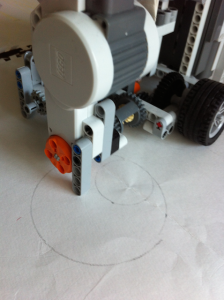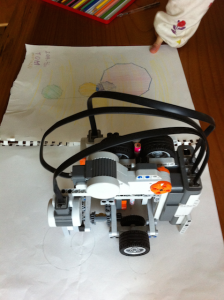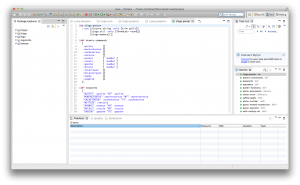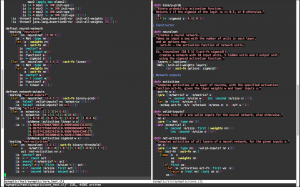Playing with robots, and learning ROS (robot operating system), I was happy to find out about rosclj, Clojure bindings for ROS. I would be able to control robots from the REPL; how nice!
However, I quickly discovered that the only thing remaining from rosclj is its documentation: the code (originally in a SVN repo of Berkeley) has disappeared. But never mind. Clojure can do Java interoperop, right? So I gave it a shot, and it turned out pretty well, so I thought I’d publish my findings because there is not much up-to-date information out there.
I started by familiarising myself with rosjava and create a pub-sub sample project following the nice tutorial here. But don’t worry, you don’t really need to fiddle out with catkin to get Clojure talk to a ROS node. This is actually simpler.
Your first ROS node in Clojure
Here are the steps:
1. Create a lein project (I called mine roscljtest), and add rosjava repository and dependencies to your project.clj. Here is mine:
(defproject roscljtest "0.1.0-SNAPSHOT"
:description "FIXME: write description"
:url "http://example.com/FIXME"
:license {:name "Eclipse Public License"
:url "http://www.eclipse.org/legal/epl-v10.html"}
:dependencies [[org.clojure/clojure "1.7.0"]
[org.ros.rosjava_core/rosjava "0.2.1"]
[org.ros.rosjava_messages/geometry_msgs "1.11.7"]]
:repositories [["rosjava" "https://raw.githubusercontent.com/rosjava/rosjava_mvn_repo/master"]]
:aot :all)2. Write a ROS node in Clojure. I simply translated the Listener from the rosjava tutorial to clojure:
(ns roscljtest.core
(:import [org.apache.commons.logging Log]
[org.ros.message MessageListener]
[org.ros.namespace GraphName]
[org.ros.node AbstractNodeMain ConnectedNode NodeMain]
[org.ros.node.topic Subscriber]))
(gen-class
:name "roscljtest.core.CljListener"
:extends org.ros.node.AbstractNodeMain
:prefix "clist-")
(defn clist-getDefaultNodeName [this]
(GraphName/of "rosjava/listener"))
(defn clist-onStart [this connectedNode]
(let [log (.getLog connectedNode)]
(doto (.newSubscriber connectedNode "chatter" std_msgs.String/_TYPE)
(.addMessageListener
(proxy [MessageListener] []
(onNewMessage [msg]
(.info log (str "I heard: \"" (.getData msg) "\""))))))))3. Build the Clojure code, and create a uberjar, which will be useful to avoid messing up with the classpath:
> lein uberjar
If everything goes well, the following jar file should be generated, and (notice the :aot :all in our project.clj) contain all .class files: roscljtest-0.1.0-SNAPSHOT-standalone.jar
4. Start ROS core and the Talker from the Java tutorial (don’t start the Listener, since we will start the one we just wrote in Clojure)
> roscore & > cd src/rosjava_catkin_package_a/my_pub_sub_tutorial > cd build/install/my_pub_sub_tutorial/bin > ./my_pub_sub_tutorial com.github.rosjava.rosjava_catkin_package_a.my_pub_sub_tutorial.Talker &
5. Finally, start the Clojure node, as follows:
> java -cp target/roscljtest-0.1.0-SNAPSHOT-standalone.jar org.ros.RosRun roscljtest.core.CljListener
Once the connection is established, you should see the following output flow, at a rate of about 1 message per second:
Oct 17, 2015 8:28:18 PM org.ros.internal.node.RosoutLogger info INFO: I heard: "Hello world! 26" Oct 17, 2015 8:28:19 PM org.ros.internal.node.RosoutLogger info INFO: I heard: "Hello world! 27"
Next Steps
OK, this is great. And the thing I like the most, is that we don’t even need our project to be “catkinized”: we can just use Leiningen as usual (provided we specify the correct repo in our project.clj).
I was actually even able to run the CljListener on a separate machine (provided I set ROS_MASTER_URI and ROS_IP correctly on both machines): I did not even have to install ROS on the machine running the CljListener!
Next step will be to make this a little more idiomatic Clojure, because extending Java classes and overriding methods is no fun. And I want to be able to run commands from the REPL, which I haven’t tried yet.
But all in all, this looks very promising.




